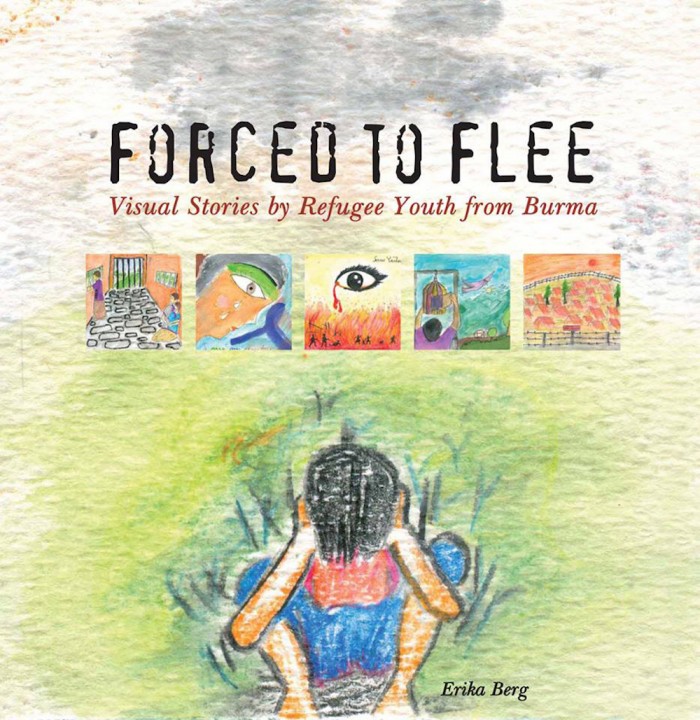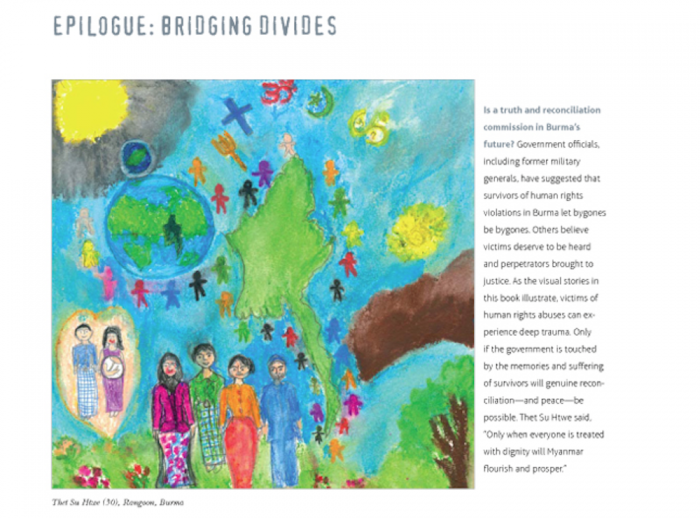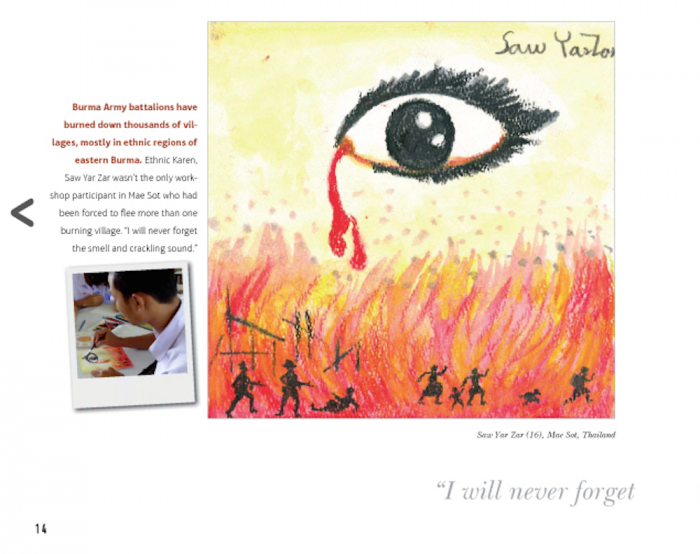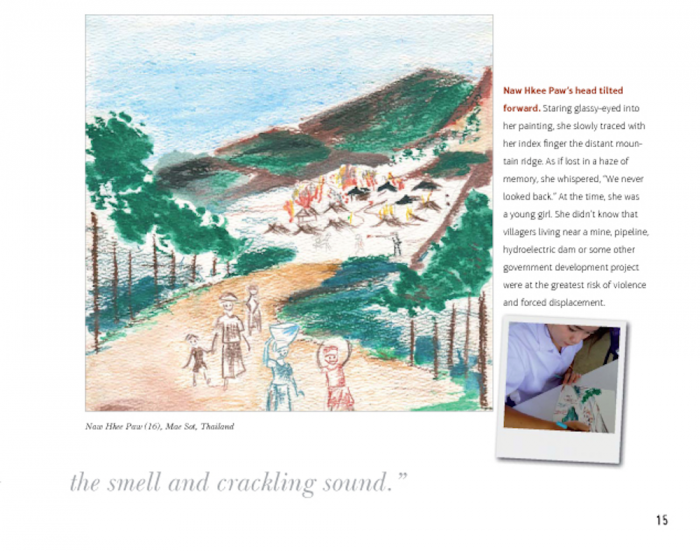From the Series
Myanmar, formally known as Burma, is just over a month away from its first general election on 8 November. This comes after more than five decades of the strict military rule that has left the nation divided. Despite the promise of reform and the spirit of democracy slowly inching its way into the hearts of Burmese citizens, humanitarian needs still persist.
Ethnic violence between minorities and the Burmese majority have left an estimated 500 000 people displaced in eastern Myanmar and another 800 000 Muslims in western Myanmar, known as the Rohingya, are stateless and lack the most basic of human rights. The violence, often state-sponsored, has forced approximately 3 million people to flee to neighbouring countries. The plight of these refugees has inspired Forced To Flee: Visual Stories by Refugee Youth from Burma – a collection of 196 visual stories, telling the history of those forced to flee acts of war against minorities who are now left vulnerable to exploitation and on-going aggression.
Author and founder of the movement behind the book, Erika Berg, describes the book as a child's eye view of the longest-running civil war in the world. Leaving a successful career in publishing behind, Berg facilitated over 40 workshops along the borders of Myanmar and in the United States and Canada since 2010, aimed at giving a voice to refugees whose stories are often impeded by the barrier of language.
The workshops took place in refugee camps, a shelter for children who had been trafficked, orphanages, boarding houses, clinics, monasteries, churches, offices, community centres, a city dump, schools, a textile factory, libraries, homes and open fields.
Berg found that the children’s narrated paintings prove that emotions conveyed and evoked by a single image could open the hearts of those who would have been otherwise indifferent or unaware of their plight.
“There is something extraordinarily powerful about a refugee child painting his/her experiences in the universally understood language of narrative art. Free of adults’ judgments and generalisations, which tend to politicise issues and polarise opinions, visual stories painted by and about youth humanise issues,” says Berg.
The book is a testament to the transformative power of art. According to Berg, children are the bridge-builders and peacemakers through which reconciliation in Myanmar can be reached.
Drawn into the youths’ inner worlds, we gain a child 's eye view of what it feels like to be forced to flee one’s homeland and live in exile, haunted—and often empowered—by traumas of the past.
The workshops emphasised that genuine reconciliation in Myanmar’s divided society depends upon uncovering the truth and reaching a shared understanding of the past, however painful. While ethnicity, language, religion, and political affiliations continue to divide, Berg’s project seeks to unite through the shared language of art.
“Visual stories are more likely to evoke an emotional response and be shared on social media. When painted by a refugee child, there is immediacy, a greater sense of urgency to the issues raised,” says Berg.
The youths involved in the program illustrated issues including; the forced conscription of child soldiers, forced labour, land confiscation, forced relocation, extortion, political prisoners, torture, oppression of ethnic and religious minorities, ultra-nationalistic attitudes favouring Burmese Buddhists, rape as a weapon of war, landmines, extreme poverty, and Burma’s inherently undemocratic 2008 Constitution.
All of the royalties from the sale of the book are donated to refugee youth leaders dedicated to healing ethnic and religious divides and promoting peaceful coexistence in and along the borders of Myanmar.











